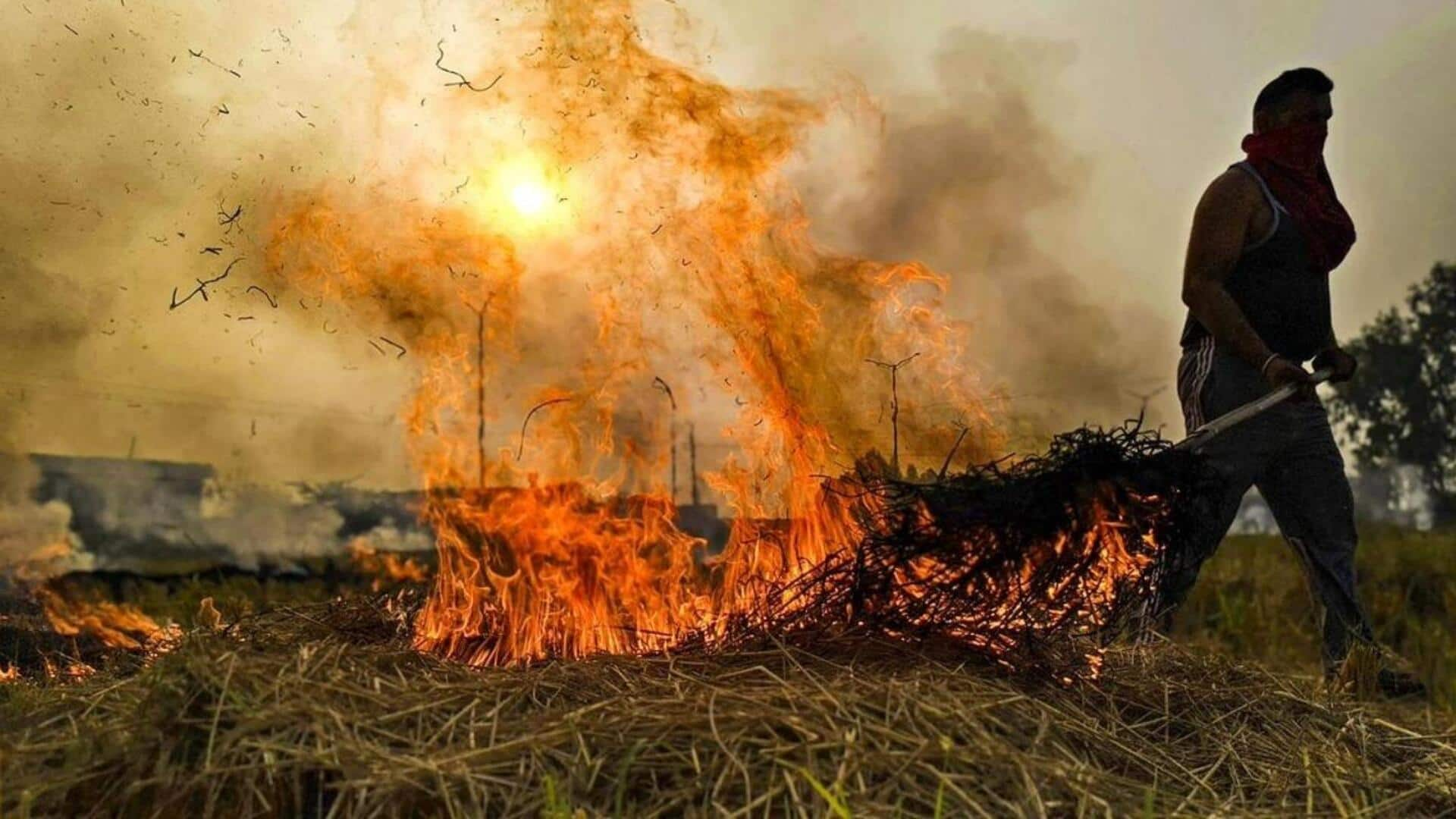
Punjab: 73% drop in stubble burning cases this year
What's the story
Punjab has witnessed a major decline in stubble burning incidents this year, with only 415 cases reported between September 15 and October 21. This is a sharp decrease from the same period last year, when 1,510 cases were recorded. According to data from the Punjab Pollution Control Board (PPCB), the total number of farm fires recorded in 2023 for the same period was 1,764.
Contributing factors
Delayed paddy harvest due to heavy rains
The drop in stubble burning incidents is largely attributed to the delayed paddy harvest due to heavy rains till early October. Flood damage also hampered crop harvesting in some areas. Officials believe that stricter field monitoring and awareness campaigns about the harmful effects of stubble burning have played a significant role in this decline.
Harvest status
District-wise paddy harvest and farm fire cases
This year, Punjab has a total paddy cultivation area of 31.72 lakh hectares, out of which 32.84% has been harvested till October 21. The Amritsar district leads with 70% of its paddy area harvested, followed by Tarn Taran at 67.95%. These districts also account for most farm fires, with Tarn Taran reporting 136 cases and Amritsar 120 cases. Ferozepur saw 41 cases, Patiala 27, Gurdaspur 16, and Sangrur 14.
Legal measures
Environmental compensation fines and FIRs registered
The PPCB has imposed environmental compensation fines of ₹9.40 lakh in 189 stubble burning cases so far, recovering ₹6.25 lakh of the total amount. In addition, 170 FIRs have been registered under Section 223 of the Bharatiya Nyaya Sanhita for disobedience of public servant orders. This includes 61 cases in Tarn Taran and 50 in Amritsar.
Historical data
Yearly comparison of stubble burning incidents
The state has seen a steady decline in stubble-burning incidents over the years. In 2024, there were 10,909 farm fires. The number was 36,663 in 2023, and in 2024, it decreased by 70% to 10,909. The figures stood at 49,922 in 2022, and even higher numbers were recorded between 2018-2021: 50,590 (2018), 55,210 (2019), and up to a peak of 76,590 cases in 2020.